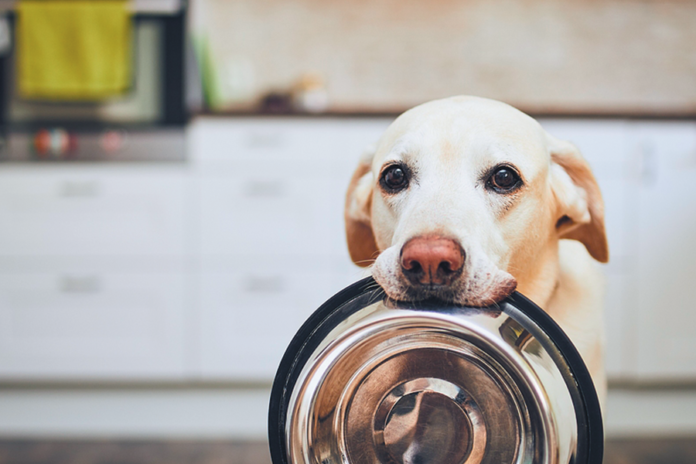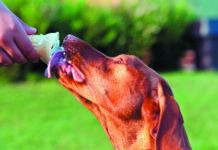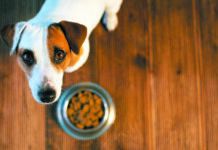The best all-around food and water bowls for a dog are made of stainless steel and have a heavy bottom. Glass or ceramic bowls, while often very nice-looking, can break, and bowls made of plastic have a number of potential problems of their own:
- Bowls composed of plastic are viewed as chewing toys by some dogs; you don’t want your pet swallowing small pieces of the synthetic material.
- Little gouges or scratched-out spots that result from chewing on the bowl can be harder to clean and therefore serve as reservoirs for harmful bacteria buildup.
- Some dogs develop allergies to plastic that result in mild but potentially uncomfortable skin reactions on the lower face or chin. Why risk putting your pet through that discomfort?
- A bowl made of a light material like plastic can pull away from a dog as he pushes his mouth against it to gather up the food, especially if he eats aggressively. That makes eating unnecessarily difficult.
Some stainless steel bowls, on the other hand, have non-skid bottoms that help the utensil stay in place. And all stainless steel bowls are dishwasher-safe.
For dogs who eat too fast
Some dogs, as many of our readers know, eat extremely fast. Usually, that’s not a problem. But large, deep-chested dogs who gulp their food with particular frenzy are at increased risk for a life-threatening condition known as gastric dilatation-volvulus (GDV), commonly called bloat. It’s a literal twisting of the stomach that cuts off blood supply and can end in death if not tended to immediately as a dire emergency.
If extremely fast eating describes your Lab, Great Dane, or other deep-chested dog, consider feeding him with the bowl turned upside down. Stainless steel bowls designed not to tip over often look like a bundt pan when turned upside down, and if you place the food in the circle surrounding the raised middle, it will force your dog to keep raising his head as he makes his way around the ring and thereby slow his eating.
You can also buy a bowl that has “fingers” or knobs sticking up from the middle that your dog will have to make his way around. That, too, will slow his pace.
The solution doesn’t have to be in the bowl. You can also feed your pet from food puzzles that slow the pace of eating. Or feed him more meals each day, separating the food into smaller portions.
A bowl that sits a foot or two off the floor sounds like a great idea because it means a dog doesn’t have to bend to get his food. And for dogs who have problems such as severe arthritis that cause pain upon movement, it is. A raised bowl puts less stress on the neck and perhaps other parts of the body.
But we do not recommend an elevated food bowl for large dogs at risk for bloat. That’s true even if they have mobility issues. An older but still concerning study published in the Journal of the American Veterinary Medical Association concludes that eating from a raised bowl increases an at-risk dog’s chances for developing bloat. Why take the chance?






Another problem with some raised dishes are the ones that have a stand that is made from formed metal rods/wire with an open top (space between the dishes and around the top of the stand). I once had a dog who’s tags on his collar got caught in the open framework and tried to pull away and the stand and dishes came right along with him. He would never eat or drink from them again.